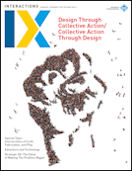Literature
We will be using the following three texts throughout the course.
Adams, J. L. (2001).  Conceptual Blockbusting: A Guide to Better Ideas. Cambridge, Massachusetts: Perseus Publishing.
Conceptual Blockbusting: A Guide to Better Ideas. Cambridge, Massachusetts: Perseus Publishing.
This book is all about breaking down the barriers that block us creatively and conceptually so that we might think around and through a problem rather than simply running into it head on and getting nowhere. It will also help us in learning techniques for collaborative development and adapting to social workflows.
Adams will surprise you by showing you new ways to think about things that you regularly overlook. This books has been in print for almost 50 years and it is still presents one of the most innovative and effective approachs to prolem-solving and critical thinking available.
Norman, D. A. (2013).  The Design of Everyday Things: Revised and Expanded Edition. New York: Basic Books.
The Design of Everyday Things: Revised and Expanded Edition. New York: Basic Books.
Don Norman is a genius of design psychology. This book is all about the psychology of design and how subtle changes can make a huge difference in the way that people interact with objects, tools, and technologies. Don Norman is a genius of design psychology.
This book will help us to get into the mind of the user so that we can better consider needs and affordances that can change the nature of an interaction. You'll never look at a teapot the same way again.
Miller, L. (2015).  The Practitioner’s Guide To User Experience Design. New York: Grand Central Publishing.
The Practitioner’s Guide To User Experience Design. New York: Grand Central Publishing.
Luke Miller is a graduate from the SILS MSIS program. He takes a hands-on, practical approach to user experience. We will use this book as a reference and resource for designing workflows, creating prototypes, and evaluating our design output and process.
Where to acquire
These books are all available at the UNC Student Stores or on Amazon.com.
There will also be copies of all of these books (in various editions) on reserve at the SILS library.
Other readings for this class
We will also be reading articles from UX and design journals and blogs. These will be posted on the schedule page, usually a week ahead of time.
A full BibTeX database will be linked here for download and continuously updated over the course of the semester. You can use this database (with a .BIB extension to import references from this class into your favorite reference manager.)
BIB database of readings for INLS718 [inls718-readings.bib]
Other useful resources
We will occasionally read things from the following books and magazines. You may want to consider owning or subscribing to them if you are planning on teaching or working in UI/UX/IX design.
Books
Lidwell, W., Holden, K., & Butler, J. (2010).  Universal Principles of Design (2nd ed.). Beverly, Massachussetts: Rockport. Access via UNC proxy.
Universal Principles of Design (2nd ed.). Beverly, Massachussetts: Rockport. Access via UNC proxy.
This book contains short discussions of 125 design principles, focusing on usability, teaching through design, making better design descisions, and the design process. It is a good quick reference for basic design principles.
The book is organized into a list of questions that, as designers, we should be constantly asking ourselves:
- How can I influence the way a design is perceived?
- How can I help people learn from a design?
- How can I enhance the usability of a design?
- How can I increase the appeal of a design?
- How can I make better design decisions?
Krug, S. (2014).  Don’t Make Me Think, Revisited: A Common Sense Approach to Web Usability. San Francisco, California: New Riders. Access via UNC proxy.
Don’t Make Me Think, Revisited: A Common Sense Approach to Web Usability. San Francisco, California: New Riders. Access via UNC proxy.
Steve Krug is probably best known for his famous quote: "It's not rocket surgery.™" This book is a straightforward, step-by-step introduction to design practices for screen-based interfaces. Hundreds of thousands of copies have been sold since it was first pulished, making it one of the most popular web-based design books around.
The chapters on usability are indispensible and lay out a plan for usability testing that encourages doing it early and often, incorporating it into the design process throughout. We will read a few sections from this book over the course of the semester, but it will be very useful to you as a reference.
Periodicals
interactions,  ACM: New York, New York. ISSN:1072-5520 EISSN:1558-3449
ACM: New York, New York. ISSN:1072-5520 EISSN:1558-3449
interactions is the magazine of ACM's Special Interest Group on Computer-Human Interaction (SIGCHI), and is read throughout the world by researchers and professionals specialized in Human-Computer Interaction (HCI) and UI/UX/IX design. Becoming a member of SIGCHI subscribes you to interactions. It is something worth considering if you are interested in this field of reasearch and practice.
Online resources
The Interaction Design Foundation  maintains a huge set of online resources and training texts for designers.
We will use some of these in class, but it is a good idea to peruse them of your own accord as well.
maintains a huge set of online resources and training texts for designers.
We will use some of these in class, but it is a good idea to peruse them of your own accord as well.
